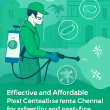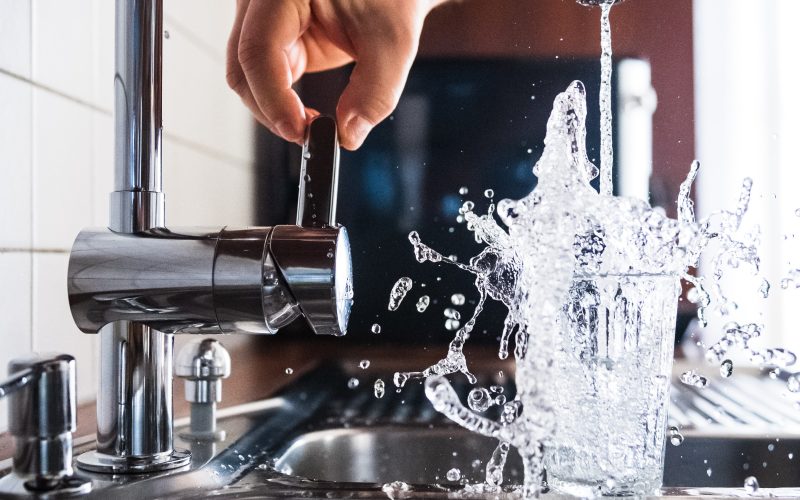Introduction
Water is essential for life, and we rely on it to keep us hydrated, clean, and healthy. But have you ever wondered what exactly is in your tap water? Is it safe to drink straight from the faucet or should you filter it first? In this blog post, we’ll dive into the truth about tap water, its composition, and quality standards. We’ll also examine how tap water is regulated in the United States and the pros and cons of drinking it. So sit back with a glass of H2O as we explore everything you need to know about one of our most precious resources – tap water!
What’s in Tap Water?
When we turn on the tap to get a glass of water, we often don’t think about what’s actually in it. But have you ever wondered what exactly makes up your tap water?
First and foremost, tap water typically contains dissolved minerals such as calcium, magnesium, and potassium that are essential for our bodies to function properly. However, depending on where you live, your tap water may also contain other substances like chlorine or fluoride that are added during the treatment process.
In addition to these naturally occurring minerals and added chemicals, there may also be trace amounts of pollutants from sources like agricultural runoff or industrial discharge. While these levels are generally very low and not considered harmful at the concentrations found in drinking water, some people still choose to filter their tap water for peace of mind.
It’s important to note that while most municipalities test their drinking water regularly for contaminants and follow strict regulations set by the Environmental Protection Agency (EPA), there is always a possibility of contamination due to unforeseen events like natural disasters or infrastructure failures.
Understanding what’s in your local tap water can help you make informed decisions about filtering or treating it before consumption.
How is Tap Water Regulated in the United States?
Tap water is a vital resource for millions of Americans, and its safety is paramount. So how does the United States regulate the quality of tap water?
The answer lies in the Safe Drinking Water Act (SDWA), which was passed by Congress in 1974 to protect public health by regulating the nation’s drinking water supply. Under the SDWA, all public water systems must meet certain standards for contaminants such as lead, arsenic, and bacteria.
To enforce these standards, each state has an Environmental Protection Agency (EPA) that monitors local water systems and ensures they comply with federal regulations. The EPA sets maximum contaminant levels for each regulated substance based on scientific research and risk assessments.
In addition to monitoring drinking water quality, the EPA also requires public notification if there are any violations of these standards or if temporary contamination occurs due to natural disasters or other events.
While no system is perfect, regulatory agencies work hard to ensure that tap water remains safe for consumption across the United States through ongoing testing and enforcement measures.
The Pros and Cons of Drinking Tap Water
There are several advantages and disadvantages to drinking tap water. On one hand, tap water is readily available and more affordable than bottled water. It also contains essential minerals such as calcium and magnesium that are important for overall health.
However, the quality of tap water varies depending on where you live. Some areas have high levels of contaminants such as lead, chlorine and fluoride which can be harmful if consumed in large quantities over time. Additionally, some people may find that the taste or smell of tap water is unpleasant.
Filtering your tap water can help remove impurities and improve its taste, but this does come with an additional cost. Many people opt to purchase bottled water instead because they believe it is safer or tastier than tap water.
It’s important to note that most municipal governments regulate their public drinking supply to ensure it meets federal standards for safety and cleanliness. However, it’s always a good idea to research the quality of your local tap water by checking government reports or contacting your local utility company.
Ultimately, whether you choose to drink tap or bottled water comes down to personal preference and individual circumstances.
Should You Filter Your Tap Water?
When it comes to tap water, some people prefer to filter it before drinking. But is this really necessary? Let’s take a closer look.
Firstly, it’s important to note that tap water in the United States is generally safe to drink. The Environmental Protection Agency (EPA) sets standards for over 90 contaminants and requires public water systems to regularly test their water for these contaminants.
However, some people may still choose to filter their tap water for various reasons. One reason could be taste – some people simply do not like the taste of tap water and may use a filter to improve its flavor.
Another reason could be concerns about specific contaminants that are not regulated by the EPA. For example, lead pipes or old plumbing fixtures can leach lead into drinking water, which can have harmful effects on health over time.
It’s also worth noting that not all filters are created equal. Some filters only remove certain contaminants while others may remove more or less depending on the type of filter used.
Ultimately whether or not you should filter your tap water depends on your personal preferences and concerns about potential contaminants in your specific area. If you do choose to use a filter, make sure you research different types and brands carefully before making a purchase decision.
How to Find Out the Quality of Your Local Tap Water
Knowing the quality of your local tap water is important for your health and safety. Here are some simple steps to help you find out its quality.
Firstly, check with your local water supplier or utility company for a copy of their annual water quality report. This report contains information about the source of the water, any contaminants found in it, and how these levels compare to federal regulations.
You can also use online databases such as the Environmental Protection Agency’s (EPA) website to access this information. The EPA has created an interactive map that allows you to search by zip code for drinking water violations and contamination reports.
Another option is to invest in a home testing kit. These kits are easy to use and can provide instant results on various contaminants such as lead, chlorine, bacteria, and pesticides. However, keep in mind that they may not be as accurate as professional laboratory tests.
Consider reaching out to independent organizations like NSF International or Underwriters Laboratories who certify products related to public health and safety including those related to drinking water filtration systems.
By taking these measures into account you can ensure the quality of your tap water meets necessary standards while keeping yourself informed about potential risks.
Conclusion
After examining the composition and quality standards of tap water, it’s clear that it can vary greatly depending on location. While tap water is generally safe to drink in the United States thanks to strict regulations, there are still potential contaminants that can make their way into your drinking water.
While some people may choose to filter their tap water for added peace of mind or taste preferences, others may feel comfortable drinking it straight from the faucet. Ultimately, the decision is up to you and what works best for your household.
Regardless of whether you choose to filter your tap water or not, understanding its composition and quality standards is important for ensuring the health and safety of yourself and those around you. By staying informed about where your drinking water comes from and how it’s regulated, you’ll be able to make more informed decisions when it comes to choosing between different sources of hydration.











